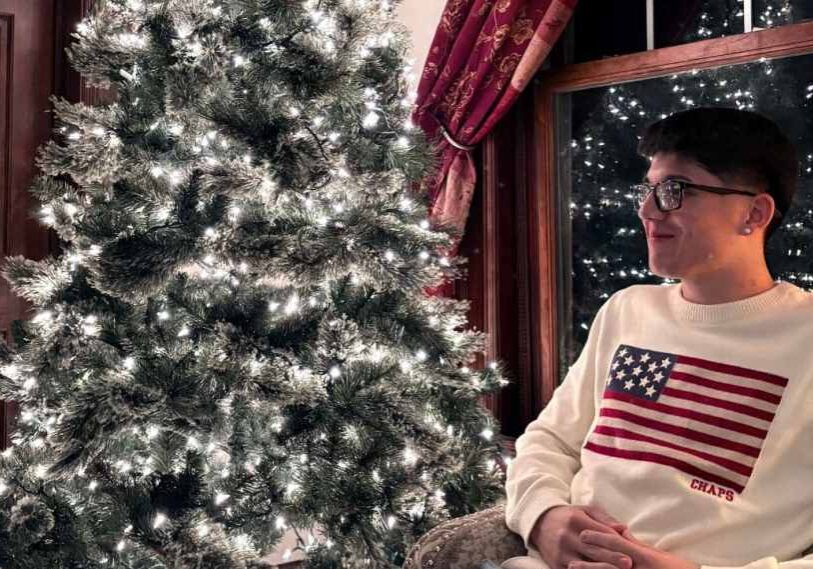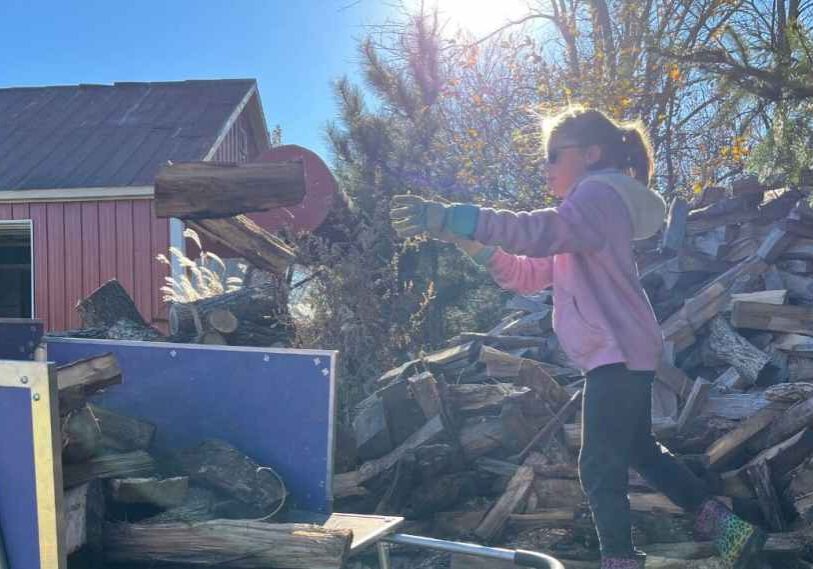Essay | Celebrating Blossoming Ephemerals, the Return of Birdsong and Earth Day
In honor of Earth Day

AMHERST TOWNSHIP’S “BIG WOODS”, FILLMORE COUNTY — Spring is a time of urgency for me, of feeling that I mustn’t miss the first swelling pussy willows, the first blooming hepatica, the first robin, or yellow-rumpled warbler. I want to walk fast because I have so much energy, because I see so much energy around me – in the birds constantly singing with nothing but sex on their minds, in wildflowers unfolding before my eyes. But, to watch a robin or a phoebe building a nest, I must walk slowly or stop altogether.
I must admit I can’t see it all, but in stopping to watch the phoebe, I know that, in a way, I am seeing all of spring, all springs merging into one.
When I began my walk one spring day, the air felt soft on my skin. A spider’s web glinted in the sun between the railings of my new front porch. Spring beauties blossomed in my yard.

Emerging false rue anemone plants blanket the forest floor. (Photo by Loni Kemp)
At the curve of my driveway, I stopped by an area of brush kept low for the power line. A blue-winged warbler was perched on the line singing. He sings all spring, every spring.
The year before, I had come upon two fledglings there. They still had downy feathers, wide gapes, short tails and were barely able to fly from twig to twig in the low brush. I wouldn’t have known they were blue-winged warblers without seeing their two agitated parents hovering nearby.
A field sparrow also sings in this area all spring and summer long and rose-breasted grosbeaks nest in the nearby prickly ash.
Around the curve, my driveway cuts into a hill on one side and drops off to a sheltered hollow on the other. One year, a turkey laid 10 eggs on the ground in the hollow and a ruffled grouse nested on the side of the hill. The nest and eggs still exist in my mind.
As I continued my walk, I noticed hepaticas were blooming along the driveway, bloodroot leaves were up and fiddlehead ferns had risen out of the ground.
Sixty feet high in a basswood tree, a pair of blue-gray gnatcatchers was flitting around decorating the outside of their tiny nest with bits of lichen. I had first seen them 10 days earlier, building their nest of plant down, fibers and catkins, held together by spider silk.

Illustration by Dana Gardner of Blue-Gray Gnatcatcher in Black Oak from the book “At Home in the Big Woods.”
When I reached our mailbox and the culvert at the entrance to our driveway, I thought about the time many years ago when Amherst Township installed the culvert after we had almost lost our new Chevy pickup in the ditch. Neighbors and township commissioners, with hands in their pockets and seed caps on their heads, had come to watch the installation.
Big Woods Road
As I turned on to the Big Woods Road, I waved to my Amish neighbors, who passed me in their horse-drawn buggy on their way to church.
To my left, high in a young elm, I saw a redstart nest; it rivals the gnatcatchers in beauty and delicacy of construction. American redstarts nest in this tree or a neighboring tree every year. One year I had witnessed the whole process: nest building, incubation, feeding of the nestlings and finally feeding of the fledglings.
I paused at the spring that supplied our water before we had a well. It forms a small run that drains in the South Fork. Northern cardinals, tufted titmice, ovenbirds, scarlet tanagers, indigo buntings and yellow-throated vireos have nested in this area. Solomon’s seal and a patch of ginger grow here every summer.

The burgundy blossom of Canadian ginger. (Photo by Loni Kemp)
When I reached the bridge, I heard whistling of cedar waxwings and could still see three of their nests from the years before. At least six species of warblers were singing there, including a Louisiana waterthrush. But, warbler migration isn’t like it used to be. I remember seeing waves of warblers with up to 15 species every day of spring. That hasn’t happened for many years now.
Other changes have occurred in the Big Woods since we moved here. We have seen the building and demolishing of houses and barns. Residents have come and gone.
The Amish, who arrived about the same time we did, have grown in numbers. The countryside is dotted with their graceful white houses. Over the years, Big Woods children have become adults and parents have become grandparents.

South fork of the Root River, upstream of the village of Choice.
(Photo by David Beseman)
As I looked at the South Fork from the bridge, I noticed a school of brown trout. Generations of trout have come and gone over the years, but their colors are always the same and trout season opens every April.
Beyond the bridge, I came to the stump where chickadees were excavating a nest and the place where Joe-Pye-weed grows. Great spangled fritillaries were flying in the small meadow there. Red animal butterflies were everywhere. A few tiger swallowtails and a mourning cloak floated by.
I paused again at the big curve in the road and the secluded place where brook trout have been swimming for as long as I remember. Around the curve, I stopped to check on the yellow warbler nest that I had found a few days earlier built between stalks of cow parsnip.
At first, I had thought the nest was too big for the small birds. Then I realized it was one complete nest on top of another. In checking my references, I had found that these birds will build a second nest in this manner if a cowbird lays an egg in the first.
Beyond the warbler nest, I came to the place where a rotting tree once fell across the road at my feet and a family of flying squirrels had scampered out. Their strange appearance had scared me at first.
Between the flying squirrel place and Rosheim Hill are more animal trails, a walnut grove, a wild raspberry patch, a red-tailed hawk’s nest and a secret gate that leads to the source of Blagsvedt Run.

Illustration by Dana Gardner of a Black-Capped Chickadee from the book “At Home in the Big Woods”.
On my way back home, I saw two red-tailed hawks sunning themselves in a tree high on the bluff. When I stopped to get a better look, they lifted their great wings and flew out of sight. A cardinal sang wheet-cheer and a chickadee sang “spring is here.” The birds still sing the same songs they’ve always sung, but are fewer of them now.
Since we moved to the Big Woods, our trees have grown. Some have fallen and new trees have taken their places. But, many of the trees in the Big Woods have been cut for lumber. It will take more than a century for new trees to grow as large.
I have changed, too, over the years. I have crow’s feet now and gray hairs are getting easier to find. It’s becoming harder to climb into the bluffs, but I still get up there once in a while. I am still passionate about birds and enjoy visiting with people I meet along the Big Woods road.
When I reached the curve of my driveway again, I saw a rose-breasted grosbeak carrying nesting material.
This essay is from the book, At Home in the Big Woods by Nancy Overcott, © 2002 by Taxon Media.
The essay “Reuben”, also from At Home in the Big Woods, can be heard in this audio reading by Melissa Wray, previously published by Root River Current.






